Tram Mountain in Phung Chau Commune, Chuong My District, Hanoi has another name, Ngu Nhac Son, which originates from a legend. It is believed that the mountain was formerly a white pearl from heaven. When the pearl fell to earth near the Day River, it turned into five phoenixes which are today five mountain peaks. The name of the mountains was then changed into Tu Tram Son.
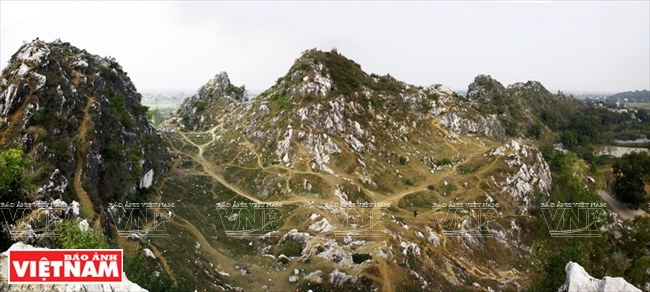
Panoramic view of Tram Mountain with 5 peaks in Phung Chau Commune,
Chuong My District, Hanoi. Photo: Viet Cuong/VNP

Doai area’s countryside with paddy fields seen from Tram Mountain. Photo: Khanh Long/VNP

Tram Pagoda was built in the 16th century. Photo: Viet Cuong/VNP

Vo Vi Pagoda is the most famous among three pagodas in Tram Mountain. Photo: Viet Cuong/VNP
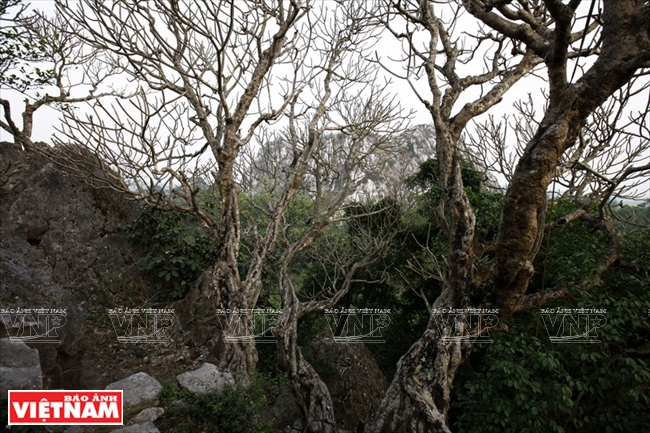
Great ancient trees at Vo Vi Pagoda. Photo: Viet Cuong/VNP
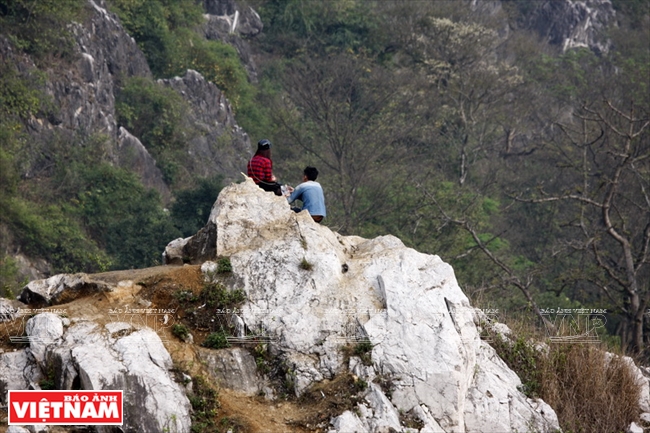
White rock peaks on the top of Tram Mountain. Photo: Viet Cuong/VNP
|
It takes only 10 minutes to get halfway up the mountain where there is flat ground for tourists to have a panoramic view of five white peaks. Here, there are different paths leading to these peaks.
Tram Mountain is known as a spiritual destination with three ancient pagodas, including Tram, Hang and Vo Vi which are small but very sacred. Vo Vi, built in the 16th century with a total area of nearly 10m2, is the most well known. Most of the area of the pagoda is designed for worshipping Buddha. There is also a pavilion, called Nghenh Phong, where visitors can enjoy fresh winds and behold the romantic landscape formed by a river peacefully winding through rice paddies and the rural countryside.
Right at the foot of Tram Mountain stands a 3m high entrance that leads to Hang (Cave) Pagoda where many stone Buddha statues are worshiped. Here, there are also various stalactites in different shapes and sizes, creating majestic scenery. Besides stone drums and statues from the Le Dynasty, the pagoda still preserves 15 ancient poems and literature works of great value on its stone walls.
Last but not least is Tram Pagoda, the main structure in the complex of beautiful spots on Tram Mountain. The pagoda has a large yard with old trees. During the festival season, it attracts a large number of tourists.
With ancient pagodas and a beautiful landscape, Tram Mountain is a spiritual destination for domestic tourists.
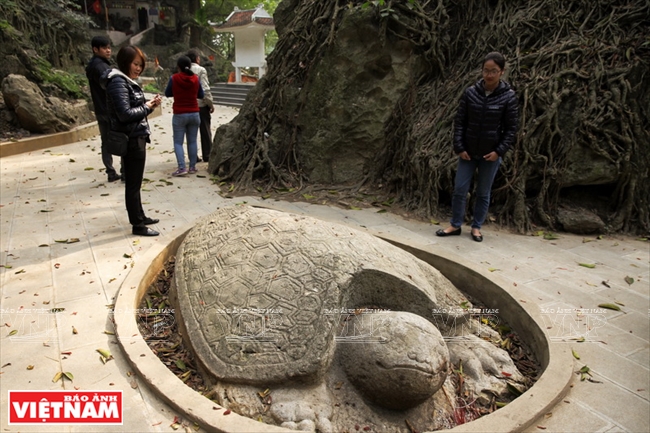
An ancient poem praising the beauty of Tram Mountain is carved on a stone turtle’s shell. Photo: Khanh Long/VNP
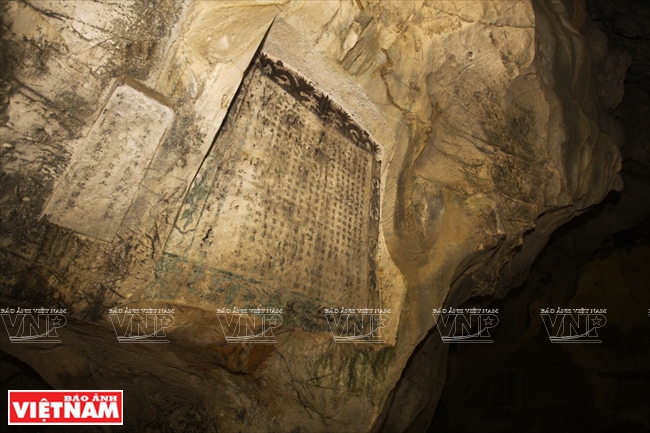
15 valuable ancient poems carved on the stone wall of Hang Pagoda. Photo: Viet Cuong/VNP
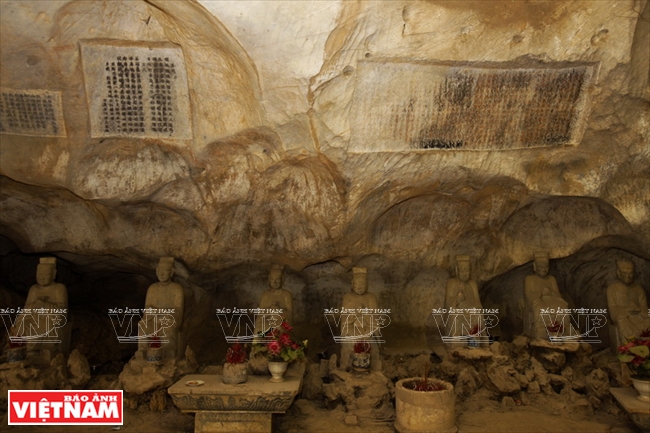
Stone statues in Hang Pagoda in Long Tien Cave at the foot of Tram Mountain. Photo: Khanh Long/VNP
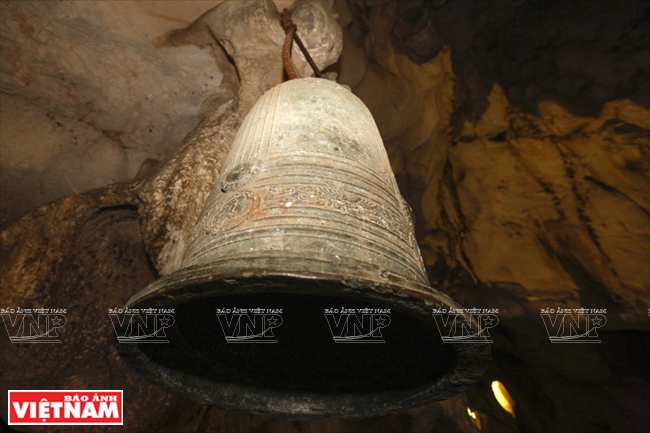
Ancient bronze bell in Hang Pagoda. Photo: Viet Cuong/VNP
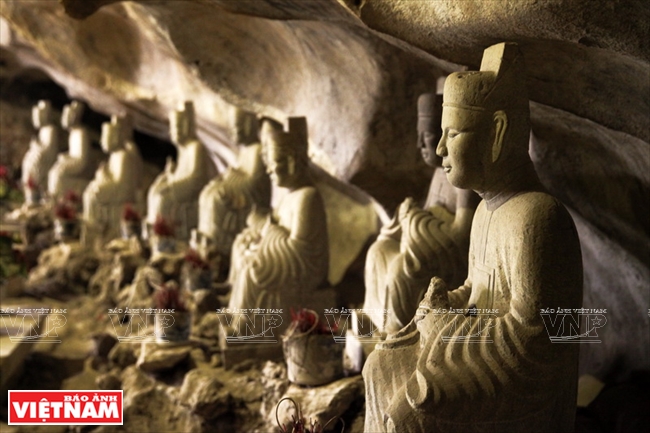
Stone statues in Hang Pagoda in Long Tien Cave at the foot of Tram Mountain. Photo: Khanh Long/VNP
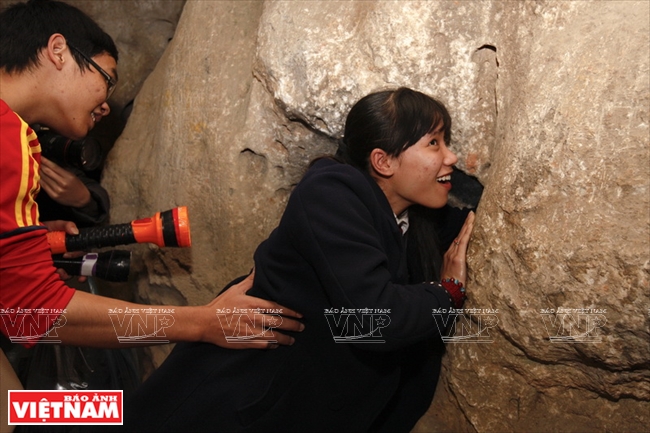
Tourists are interested in “Trong troi” (Sky drum) inside Long Tieng Cave. Photo: Viet Cuong/VNP
|
President Ho Chi Minh visited Tram Mountain four times. During the initial period of the struggle against the French colonialists, he worked and lived there for a short time before moving to Viet Bac. There, President Ho Chi Minh read “Calls for National Resistance” and “Letter of Tet Wishes” which were broadcast on the Voice of Vietnam in 1947.
|
By Viet Cuong & Khanh Long